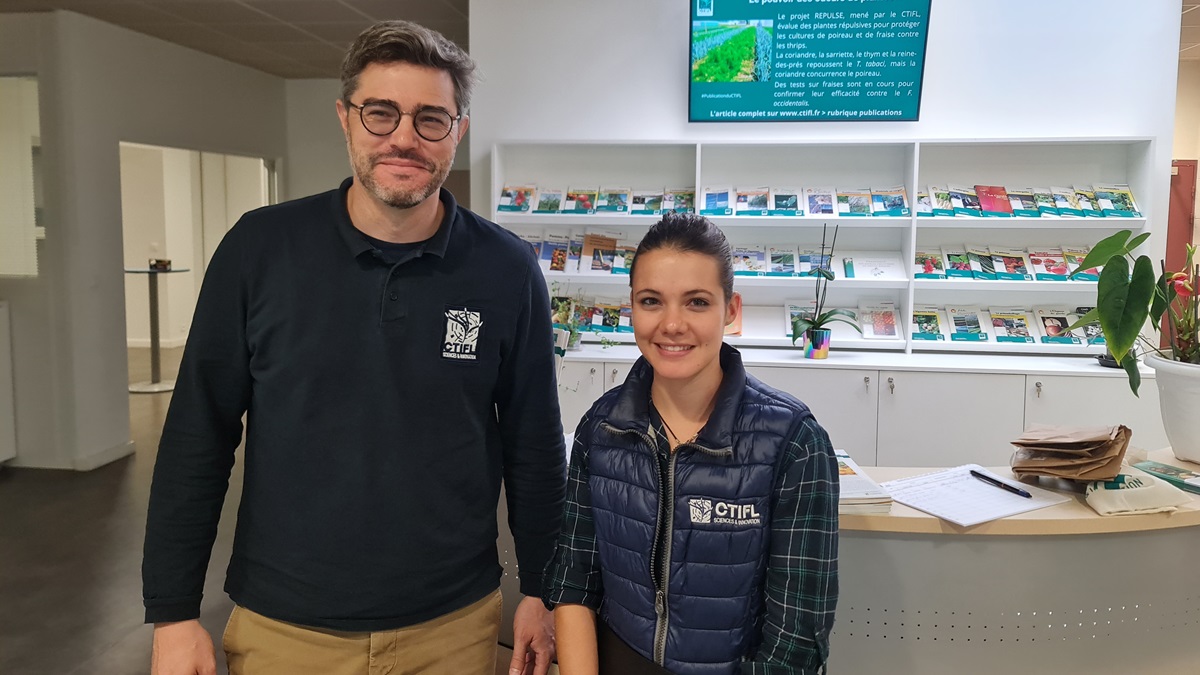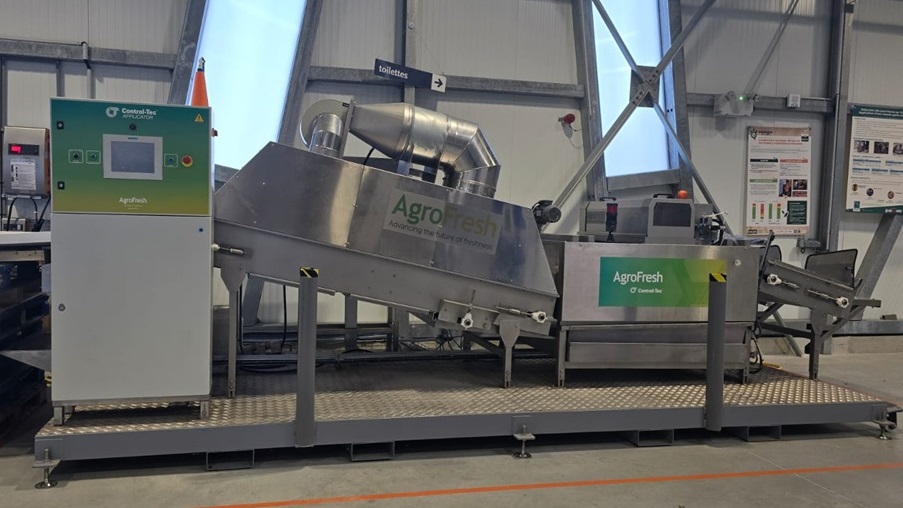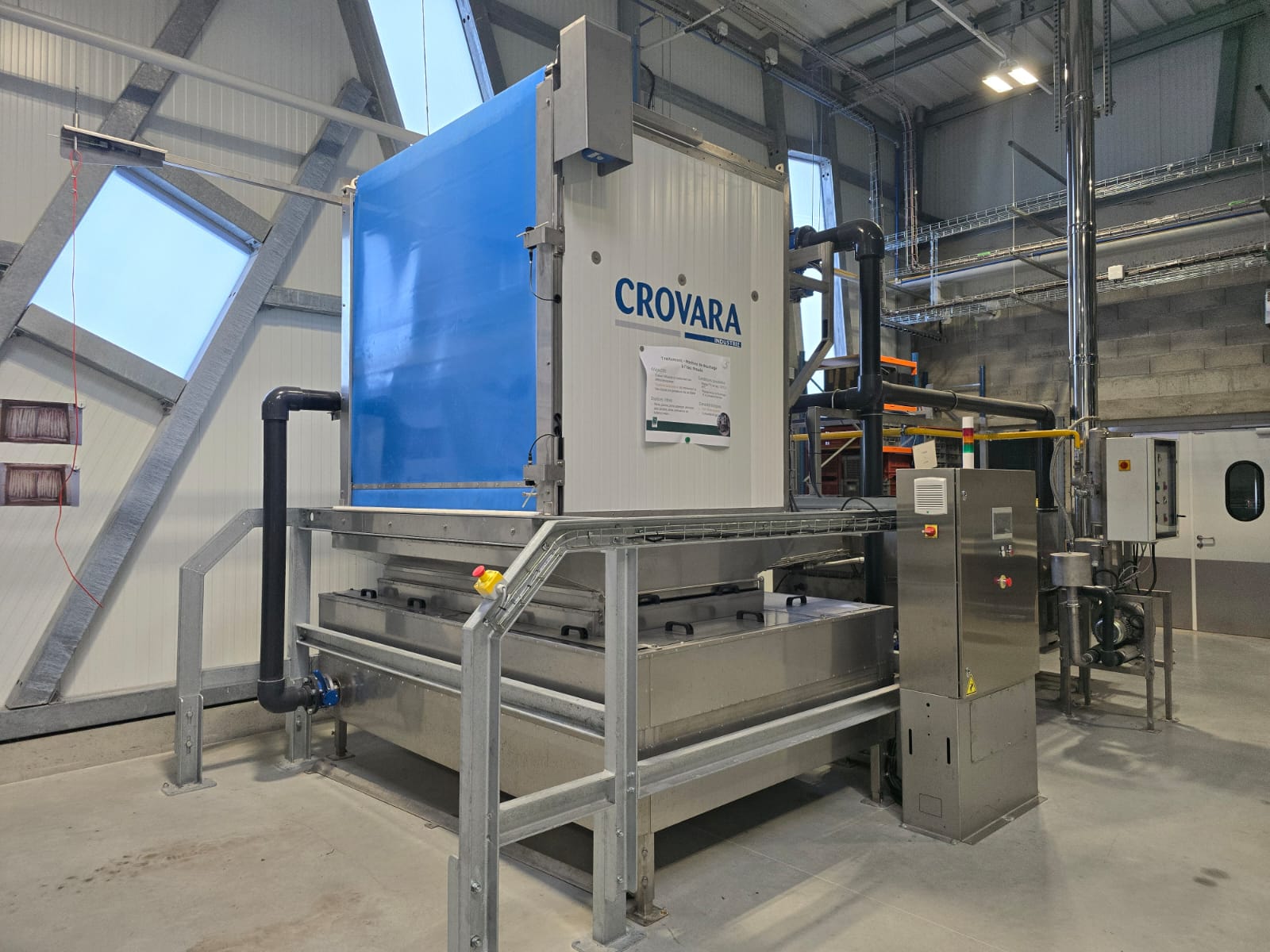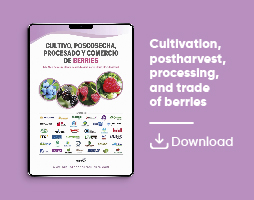News
CTIFL Saint-Rémy-de-Provence: The Engine of Postharvest Research and Transfer in France
The CTIFL in Saint-Rémy-de-Provence stands as a leading authority in postharvest research, innovation, and technology transfer, playing a crucial role in advancing the fruit and vegetable industry in France

In the heart of Provence, a new facility marks a significant milestone in the research and development of advanced solutions for preserving fruits and vegetables. Inaugurated in early 2021, the Saint-Rémy-de-Provence Platform, established by theCTIFL (Centre Technique Interprofessionnel des Fruits et Légumes), serves as a unique center for postharvest technology and innovation at the European level. Spanning 1,700 m², this platform not only addresses the current challenges facing the horticultural sector but also anticipates market demands for sustainability and enhanced quality of horticultural products.
Chloé Leclerc, Research Engineer in Postharvest Technologies, guided us through the facility. Her work focuses on the physiology of fruits such as kiwi, apple, pear, and blueberry, exploring the impact of harvest maturity on preservation and organoleptic quality. She also evaluates conservation technologies, including controlled and modified atmospheres, along with treatments like 1-MCP and ozone (O3), which help extend shelf life and reduce spoilage or quality degradation. During our visit, she detailed how these state-of-the-art facilities are advancing the horticultural sector.

CTIFL Drives Postharvest Research
Since its founding in 1952, the CTIFL has become a leading authority in applied research within the fruit and vegetable value chain. Serving as a bridge between fundamental research and practical application, the institute works closely with industry professionals to tackle challenges related to competitiveness, innovation, and sustainability. With a network of over 270 professionals spread across research centers and experimental stations in key production regions of France, CTIFL enhances its capacity to provide tailored global solutions that address diverse production realities.
In the realm of postharvest research, CTIFL spearheaded the creation of the "Innovating to Improve the Quality of Fresh Fruits and Vegetables" Technology Mixed Unit (UMT IQUAR, now IQUAR²) in 2017, in collaboration with the University of Avignon, INRAe, and CIRAD. This initiative enables the sector to tackle challenges from a multidisciplinary perspective, fostering the exchange of resources and knowledge. Additionally, CTIFL played a key role in the establishment of a Master's degree in Engineering for the horticultural sector and offers annual courses to students.
CTIFL also collaborates with various research centers and experimental stations, including CEFEL, CATE, APEF, and La Pugère.
Four Units at Work in Saint-Rémy-de-Provence
- CITAR Unit ("Competitiveness of Postharvest Practices and Technologies"): Focuses on optimizing postharvest practices to reduce losses and maintain product quality across the supply chain, from production to supermarkets (preservation, transportation, shelf-life). A Sales Experimental Zone at the CTIFL in Rungis is used to analyze products and consumer behavior.
- MOQUA Unit ("Maintenance and Optimization of Quality"): Develops tools and methodologies (such as color codes, defect references, and sensory wheels) to evaluate and enhance the quality of fresh products during the postharvest phase.
- Environmental Unit: Investigates the environmental impact of producing various species, including carbon footprints, greenhouse gases, and life cycle analysis, contributing data to the national database (Agribalyse).
- Valorization and Transfer Directorate: Organizes training sessions for businesses, helping them better understand their products, commercial techniques, quality standards, labeling, and warehouse organization.
The Saint-Rémy-de-Provence Platform Fosters Research and Accelerates Knowledge Transfer
The new facility is equipped with state-of-the-art infrastructure designed to promote research and strengthen knowledge transfer to the industry. Its key features include:
- 35 conservation chambers that allow the evaluation of various storage conditions and methodologies. Notable installations include: a forced-air tunnel for rapid cooling; 8 controlled atmosphere chambers ranging from 85 to 95 m³ (1/10th of a commercial chamber) with microcells inside; 6 conservation chambers of 25 m³; 16 controlled atmosphere chambers of 6 m³ with ozone application capabilities; 2 ripening chambers. A remarkable aspect of the facility is its design, which accommodates pilot projects and semi-industrial scale trials. These chambers enable precise comparisons of different postharvest processes, with automated systems and advanced IT infrastructure recording real-time data.

- A test area for industrial equipment or prototypes, fostering technological innovation.

The platform operates under the principle of "forward flow," ensuring a logical and efficient process from receiving goods to storage with various durations and conservation modes, and finally preparing products for consumption.
Capabilities and Services: Innovate to Lead
The versatility of the platform allows it to address postharvest challenges using a combination of advanced technological tools and multidisciplinary strategies. Key capabilities include:
- Thermotherapy: Hot water treatment for controlling diseases and pests, improving the quality and safety of fresh products.

CROVARA Thermotherapy Equipment installed in the area designated for industrial equipment reception. The technique was tested on asparagus, pumpkin, apple, pear, plum, cherry, and table grapes
- Rapid Cooling: Quickly reducing the metabolism of fruits and vegetables.
- Evaluation of New Varieties: Assessing the conservation potential of new selections, along with their organoleptic, nutritional characteristics, and sensory profile (CTIFL Balandran).
- Study of Preservation and Ripening Parameters: Research focused on understanding and optimizing factors that influence quality during storage, including temperature, humidity, and controlled atmospheres.
An Open and Dynamic Collaboration Model
In addition to serving as a research center, the platform aims to be a hub for the horticultural sector, offering various forms of collaboration. Producers, cooperatives, and industries can visit the facility, consult with teams, test hypotheses, and carry out research projects with specialized experts. Technical advice and training can be provided either at the CTIFL or at client locations. The platform also facilitates the validation of prototypes of innovative equipment in a controlled environment before mass production.
Examples of Services: From the Laboratory to the Market
- Diagnosis of mechanical impacts on calibrators.
- Ethylene analysis in cooperative storage facilities (e.g., kiwi, 1-MCP treatment).
- Evaluation of preservation methods, products, or materials.
- Product characterization through nutritional, biochemical, and sensory analysis.
Multidisciplinary Skills for Product Characterization
The platform features three complementary laboratories designed to analyze and characterize products at various stages of the postharvest chain. These facilities allow for the evaluation of the impact of pre- and postharvest practices through both destructive and non-destructive methods, providing a comprehensive quality analysis.
-
Physicochemical and Biochemical Analysis Laboratory: This lab includes a dedicated fruit and vegetable preparation area, as well as a space for testing cuts and recipes, catering to professionals interested in emerging consumption trends like fresh, ready-to-eat products. The laboratory specializes in measuring key parameters that determine the quality of fruits and vegetables, such as physical properties (color, firmness, and texture) and chemical and nutritional compounds (sugars, acids, vitamins, polyphenols, and aromas). It works closely with the sensory analysis laboratory at CTIFL Balandran.
-
Microbiology Laboratory: The laboratory offers microbiological analysis to assess product hygiene and safety, determine best-before dates through shelf-life studies, and track microbiological evolution.
-
Sensory Analysis Laboratory: Located at Balandran, this laboratory is designed to reliably and repeatedly measure the organoleptic quality of products. Tests are conducted by both trained and untrained panels, allowing for correlations between instrumentally measured characteristics and sensory perceptions. It also identifies consumer preferences, providing valuable insights into how products are perceived in the current market.
A More Sustainable Future
With its comprehensive and multidisciplinary approach, the Saint-Rémy-de-Provence Platform of CTIFL serves as a key resource for professionals in the horticultural sector, providing innovative solutions to improve quality, reduce postharvest losses, and meet evolving market demands. In a world increasingly focused on sustainability and efficiency, this research center stands as a model for collaboration and knowledge transfer, ensuring that fresh products remain a healthy, accessible, and sustainable option for consumers.


















